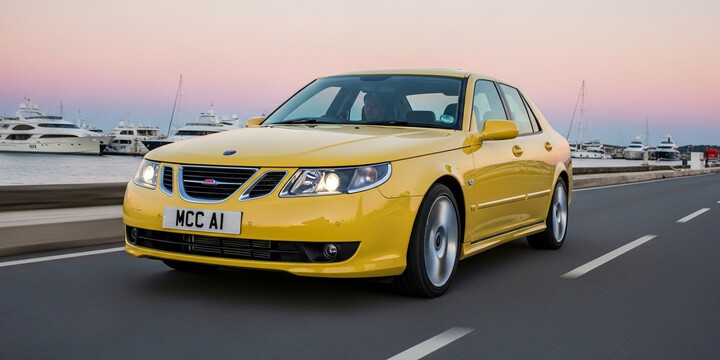
SAAB 9-5 (2010-12) 4DR SALOON 2.0T EU5 220 VECTOR SE 6SPD
The SAAB 9-5 (2010-12) 4DR SALOON 2.0T EU5 220 VECTOR SE 6SPD is a stylish and comfortable executive saloon that offers a refined driving experience, making it an appealing choice for professionals, families, or anyone looking for a reliable yet distinctive vehicle. Positioned firmly in the used car market, this model stands out with its sleek design, solid build quality, and notable driving dynamics. Typically used for daily commuting, longer journeys, and business travel, the SAAB 9-5 is appreciated for its balanced ride and impressive fuel economy, especially in the 2.0T engine variant.
What makes the SAAB 9-5 (2010-12) particularly notable is its blend of Scandinavian styling and safety features, making it a unique choice in the executive saloon segment. With an average valuation of around £4,875 and an average mileage of just over 106,000 miles, this model has been used mainly by individuals with fewer previous owners, highlighting its relatively well-maintained history. Known for its reliability and comfortable ride, the SAAB 9-5 competes well against other executive models, making it an attractive option for those seeking a distinctive, well-appointed saloon that offers both style and substance.

average use

The most recent mileage readings for the SAAB 9-5 (2010-12) 4DR Saloon 2.0T EU5 220 Vector SE 6SPD models show an evenly distributed pattern across three ranges. Approximately one-third of the vehicles have recorded mileages between 50,000 and 60,000 miles, another third between 90,000 and 100,000 miles, and the remaining third between 130,000 and 140,000 miles. This distribution suggests a spread of vehicle usage across different stages of their lifespan, with no single mileage range dominating the dataset.

vehicle values

The data indicates that the private sale valuation for the Saab 9-5 (2010-12) 4DR Saloon 2.0T EU5 220 Vector SE 6SPD is evenly distributed across three price ranges: £3,000–£4,000, £5,000–£6,000, and £7,000–£8,000, each representing approximately one-third of the market. This suggests a broad valuation spectrum, potentially reflecting varying vehicle conditions, mileage, or market demand within this model. Notably, there is no data provided for prices below £3,000 or above £8,000, which might indicate rarity or lower demand at those extremes. Overall, the valuation appears to be centered around these three price brackets, highlighting a diverse market for this vehicle in the private sale sector.

production years

The data indicates that among the sample of Saab 9-5 vehicles manufactured between 2010 and 2012, approximately two-thirds (66.7%) were produced in 2010, while the remaining one-third (33.3%) were made in 2011. This suggests that the majority of these vehicles available during this period originated from 2010, possibly reflecting production or registration trends during that time.

colour popularity

The data indicates that the main paint colours for the 2010-12 SAAB 9-5 2.0T EU5 220 VECTOR SE 6SPD model are evenly distributed among Grey, Blue, and Silver, each accounting for approximately one-third (33.3%) of the vehicles. This balanced distribution suggests that there was no single dominant colour choice for this model during that period, reflecting a diverse range of customer preferences in exterior styling.

ownership cycle

The data indicates that for the SAAB 9-5 (2010-12) 4DR Saloon 2.0T EU5 220 Vector SE 6SPD model, approximately two-thirds (66.7%) of these vehicles have had three registered keepers, while about one-third (33.3%) have only had a single registered keeper. This suggests that the majority of these vehicles have been maintained through multiple ownerships, which could imply a broader ownership span and potentially varied usage histories.

engine choices

The data indicates that all vehicles of the SAAB 9-5 (2010-12) 4DR SALOON 2.0T EU5 220 VECTOR SE 6SPD model in the sample are equipped with a 2.0-liter petrol engine. Specifically, 100% of these vehicles have an engine capacity of 1998cc and use petrol as their primary fuel type. This uniformity suggests that engine specifications are consistent across the sample, reflecting standard manufacturing configurations for this model during that period.












